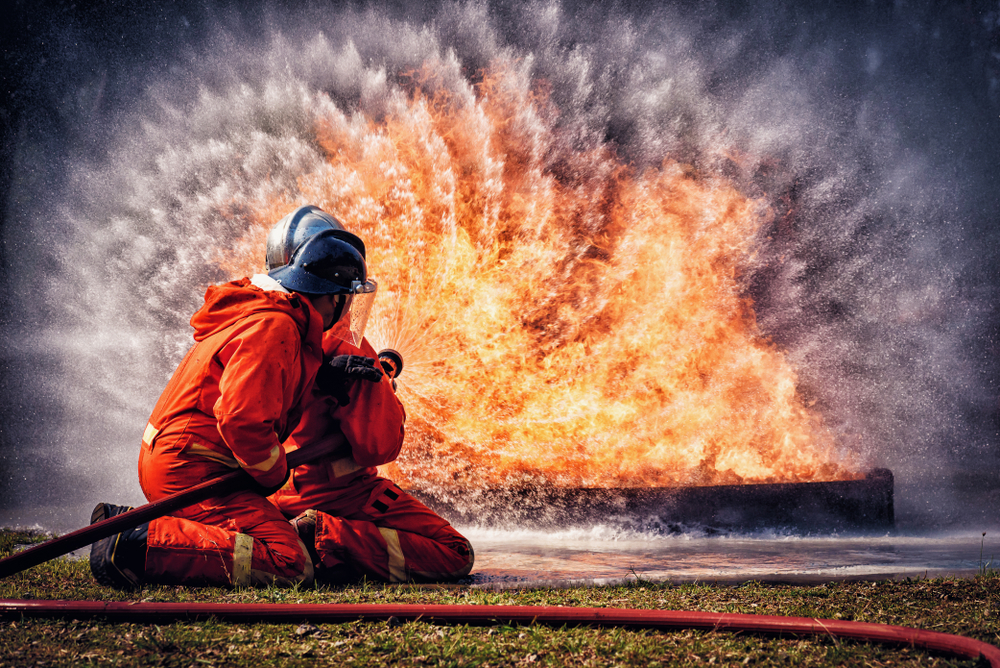Fires and explosions have long been concerns of the manufacturing industry. Since the Industrial Revolution, fire has continually been an area of focus and a cornerstone for everything from safety product development to policy and procedure. And while we’ve made great progress in mitigating the number of terrible disasters caused by manufacturing fires each year, there’s still a lot of work to do in eliminating them altogether.
A look at today’s industrial fires
According to the National Fire Protection Association (NFPA), there are just short of 38,000 industrial or manufacturing fires each year. And these are just reported incidents! The actual number is likely far higher when we account for smaller fires extinguished without calling the fire department.
Even more staggering is the damage logged by industrial manufacturing fires. The NFPA estimates as much as $1.2 billion in direct property damage each year from fires. Again, the actual number is likely far higher due to unreported incidents. The NFPA also cites 16 civilian deaths and 273 civilian injuries as annual figures.
While these numbers paint a picture of industrial fire safety that’s much better than even 20 years ago, the figures are still far too high — namely regarding death and injury, where anything higher than zero demands improvement.

Today’s fire safety systems
Fire is an inherent concern across manufacturing sectors. In some industries, like metalworking, explosion from combustible particles is a clear and present threat. In others, like packaging, everyday friction or electrical issues can be enough to start a fire. No matter the catalyst, every manufacturing facility needs proper fire abatement and response plans.
The safety devices and systems available to manufacturers today are broad. They encompass everything from industry-specific concerns, to process-specific protection, to whole-factory safety. Some of the core elements include:
- Chemical suppression — These devices (usually valves or shutoffs) cut off the supply of chemicals to prevent explosions. For example, a chemical suppression device stops the supply of oxygen to an oxyacetylene welder in the event of an emergency.
- In-line spark abatement — Often called “spark coolers,” these devices are installed in-line on manufacturing equipment. They generate turbulence to suck in and neutralize sparks present in metalworking operations.
- Venting and exhausting — Any type of motor-driven equipment will have venting and exhausting. To mitigate fire-causing conditions, it’s important to keep these outlets free of debris, unobstructed, and clean.
- Fire suppression systems — Installed factory-wide, these systems include overhead sprinklers, chemical deployment systems, and more. They’re a large-scale approach to preventing small fires from growing.
- Media collectors — These are generally large filter systems designed to trap particles that may be flammable or combustible. They’re often paired with in-line spark abatement and venting/exhausting systems.
Beyond these staples exist other fire mitigation components and systems, specific to various industries. Regardless of the industry, the path to better fire safety starts by having, using, and understanding these safety devices.

The path to better fire safety
Fire is devastating but preventable. Proper fire safety protocols in your factory will go a long way toward mitigating and even preventing fire.
If you need a refresher on fire safety, be sure to check out our article on best practices. More than just implementing proper protocols and staying abreast of standards, your factory should have an ongoing policy for fire safety that includes inspections, tests, assessments, and continuing education.
Finally, keep in mind the potential for fire to strike at any time, and always emphasize prevention. Note this statement from David Osborne, Senior Advisor to Vice President Al Gore:
“The United States has the highest fatality rate from fire in the industrial world. Why? Because we spend most of our money responding to fires, not preventing them.”
